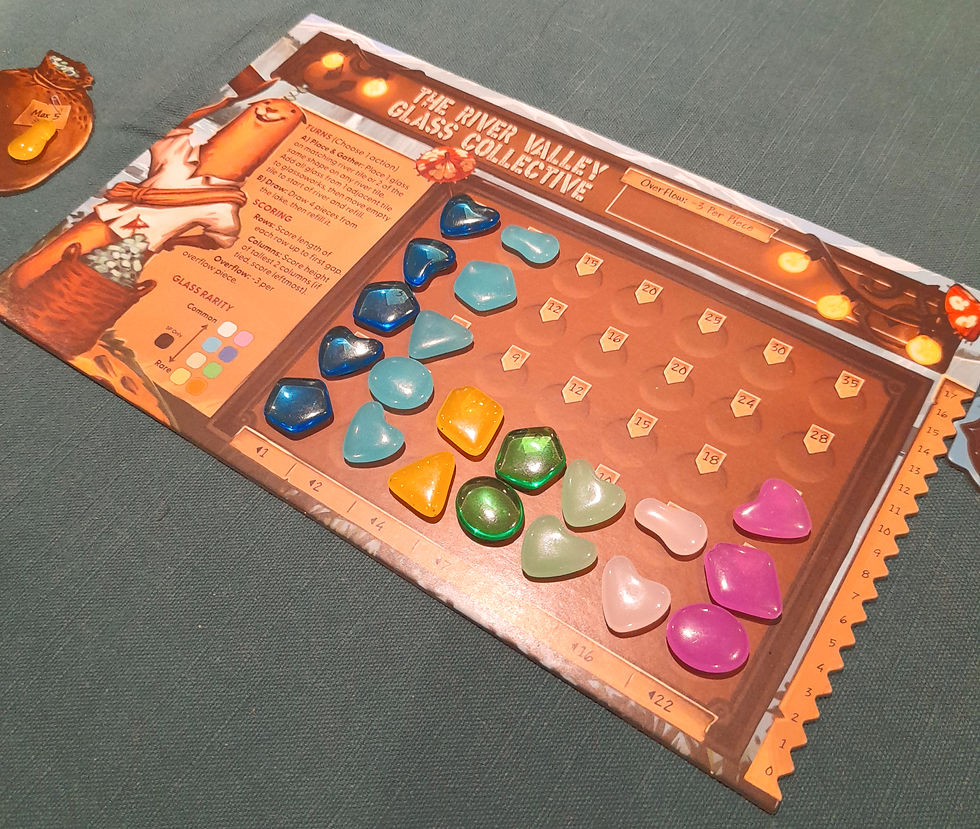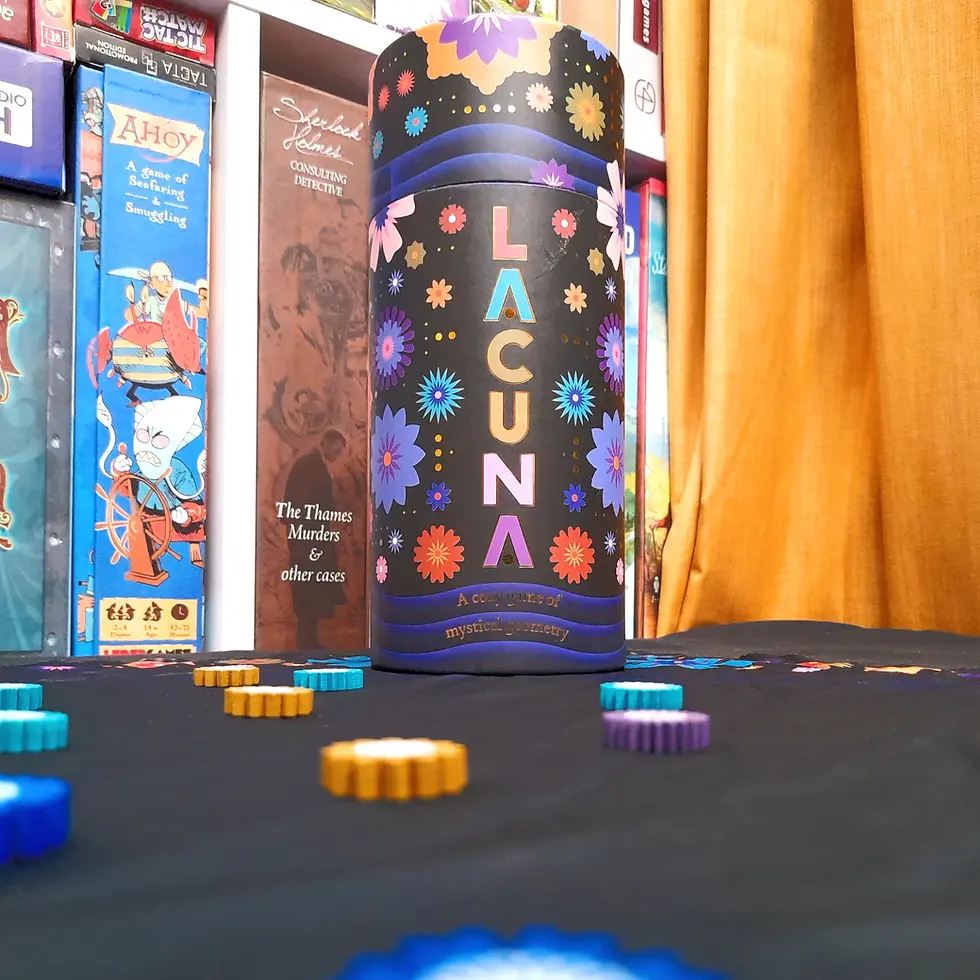River Valley Glassworks... A River of Treasures!
- Alex Critchell

- Feb 26
- 4 min read
Explore the land of River Valley in this beautiful game of glass collecting and woodland creatures. Take on the role of entrepreneurial woodland creatures making their way on the frontier and opening up their very own shop. Will this game be a best seller or will it get all washed up? Find out our verdict in this article.

I first came across this game when scrolling through social media and saw it in one of the board game groups I am part of, it caught my attention as the board looked interesting and it had tactile pieces which I enjoy from other games. So after a little more research on the game I purchased it to give it a try.
First Impressions
When I received the game I was engaged immediately by the artwork as I really enjoy anthropomorphic art and the artist has done a great job with this. The use of the gold writing on the wood effect background makes the name of the game really pop and I liked how the characters in the game are in the foreground of the image. The reverse of the box has a nice and clear layout demonstrating a brief process of how the game plays and the components you can expect to find inside. The one issue I did have with the reverse was the colour of the player count, play time and age being hard to read as it is black writing on a mid tone blue in my opinion white writing would have been better as it would make it easier to read. When I opened the box I thought the quality of the component was well made and the artwork from the front cover flowed nicely through the whole game though there were a lot of plastic bags.
Game Play Overview
In River Valley Glassworks you take on the role of woodland critters who are trying to collect glass from the river to be the most successful business in River Valley. The game is played over several rounds where each player will be taking turns to perform an action and collect glass from the river or lake. On a players turn they can do one of two actions, gather from the river or draw glass pieces from the lake.

In order to gather pieces from the river you must choose 1 glass piece from your satchel and place it on the river of the matching shape. You then choose one of the adjacent tiles to the left or right of the chosen tile and collect all glass pieces from it. Alternatively you may place two glass pieces of the same shape to be able to choose any river tile to go to instead of the one that matches the shape. Next you move the now empty tile to the end of the river and refill it with glass pieces from the bag equal the number of stones on the tile. You then add the pieces to your glassworks board. Each new colour must be placed in the next empty column on the grid going left to right and when you add a colour you already have you add it to the matching column filling it from the bottom to top. Any pieces you cannot place are placed in the overflow scoring negative points at the end of the game.
If you choose to draw glass pieces from the lake, you will choose four of the five tiles in the lake and add them to your satchel. You can only ever have five glass pieces in you satchel at any one time if you have more than this they go into your overflow. Once resolved you then refill the lake ready for the next player to take their turn.

The game ends when a player reaches or passes seventeen glass pieces in their glassworks. When this occurs each player with fewer than three glass pieces in their satchel draws pieces from the bag until they have three pieces in their satchel. You then finish the current round and then play one final round. At the end of the final round you score points for each row that you have filled from left to right without any gaps, the two tallest columns you have and you lose 3 points for each glass piece in your overflow. The player with the most points is the winner.
Pros and Cons
There are many things I really enjoyed about this game in all honesty such as the speed of play, ease of set up and the urge to play again after you finish a game. There were a couple of things though I didn't like as much like the use of too many plastic bags to store the components in and the labeling in the rulebook not being clear enough as the background colour used was a yellowish gold making it blend in a little with the artwork, a red or black background would have been a better choice in my opinion to make it more noticable. I did however have a lot of fun playing this game and have found it a breeze to teach to other people, it has good pace and fun decisions resulting in you coming back for more. The components are wonderful, I really like the different shapes and tactile nature of the glass as it really elevates the game making it more enjoyable.
Final Verdict
Overall, I really liked what this game offered it is a fun and engaging game and offers a great puzzle. For a game with only two main actions in the game the decision spaces is really good and a lot of fun. This is a game I can see a lot of people enjoying and due to its style and it being easy to teach I can see it being a game you can get out regularly. I would say this game falls into the lightweight games in my collection due to its simple nature meaning this game would not be a must have for more strategic players. If you like a game with a bit more depth and strategy though has the same tactile nature and resource drafting as this game I would suggest looking at either Azul Stained Glass of Sintra or Harmonies.
In conclusion, we would rate this game a 7.8/10
You can find out more about the game at:
If you are interested in learning more about the other games suggested in this article you can find more details about them at:
.webp)







Comments